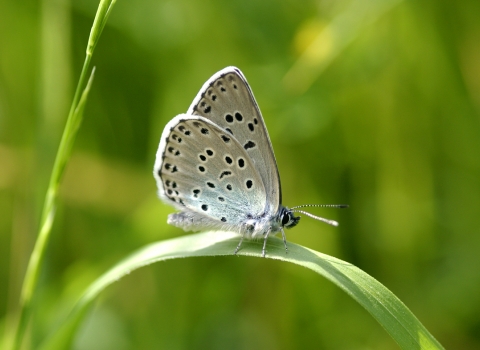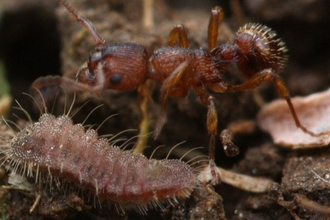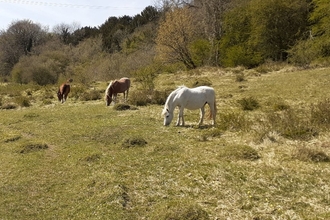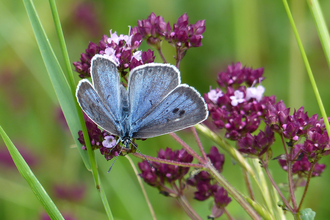Large blue butterflies had always been rare in the UK, but numbers declined dramatically during the twentieth century until it was officially declared extinct in 1979. A successful reintroduction project at Daneway Banks nature reserve, in partnership with the Royal Entomological Society, has led to this grassland being home to the largest population in the world as of 2019.
Although it's not as big as other butterflies, the large blue is the largest in the Polyommatinae family. Adults fly for a short period from the end of June to the beginning of July, and breed in unimproved grasslands such as those found at Daneway Banks in the Golden Valley. The Site of Scientific Interest (SSSI) found here is a wonderful example of limestone grassland and is widely regarded as one of the best places in the world to see this star species.
The large blue butterfly relies on the red ant, Myrmica Sabuleti, to complete its unusual lifecycle, and once the connection was understood between how changes in land use and grazing patterns affected the ants (and in turn the large blues), the habitats could be managed to make them more hospitable.
In 2022 the large blue flew in its greatest numbers and in more places since records began. Read more about this here.
To find out more about their intriguing and unusual lifecycle, the important of the right habitat and how we manage our reserves to help them and other species thrive, check out the large blue blogs or watch the short film below.
Tips for how to explore Daneway Banks mindfully
Looking after the plants
How the land is managed before the large blues emerge is incredibly important to their survival, but looking after the reserve during the time they're here is just as crucial.
The plants they feed on, lay their eggs on, and that their larvae eat when the eggs hatch, are delicate and vulnerable to being trampled. By sticking to the paths you're ensuring they have lots of places to rest, eat and start the next generation.
Parts of the nature reserve at Daneway Banks have been cordoned off to provide them a safe zone of zero disturbance. Please do not enter these areas - if you sit nearby, you may even see some of them laying their eggs!
Thinking of taking your dog with you?
Dogs are welcome at Daneway Banks, though we do ask that you keep them on a lead during the butterfly breeding season so they also stay on the paths.
What to expect from your visit
Curious about what it'll be like when you get there? Join Katherine in a virtual walk through of Daneway Banks in the last of her large blue blogs. Discover what plants, animals and insects you might see in June or July and what to expect when you get there.
Sightings and updates
The large blue butterflies have come to the end of their flight season for the year, and we've been sent lots of wonderful pictures by our wardens, land managers and visitors to the reserve over the last few months that you can see below.
The large blue blogs















